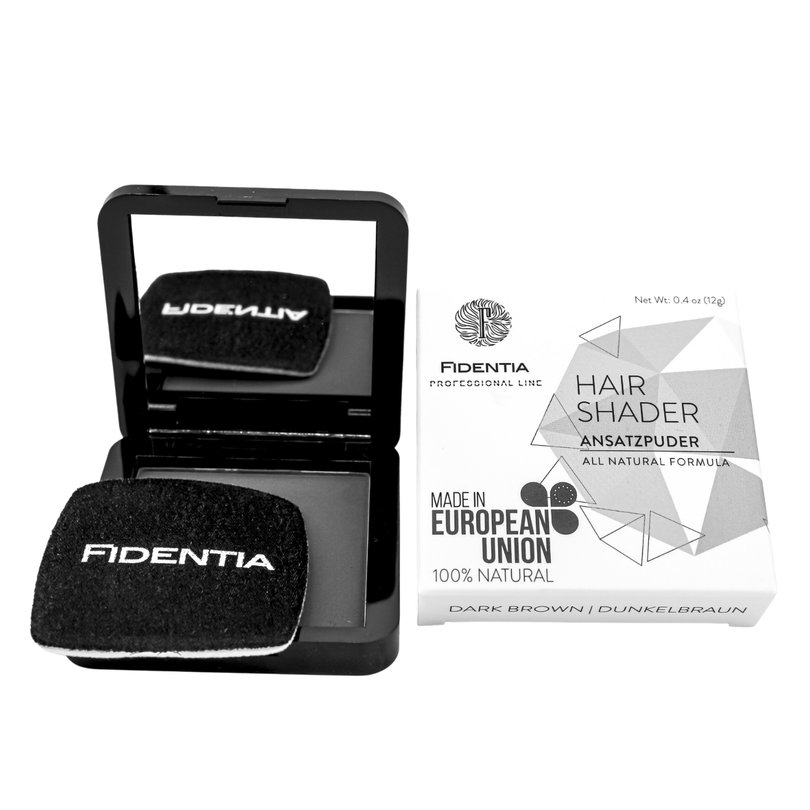What you should pay attention to when swimming as a second hair wearer - despite waterproof products
"Swimming" is often an umbrella term for swimming in chlorinated pools, salty oceans, or waters with currents, rapids, and waves. With all these challenges, water itself becomes the most harmless factor. Waterproof does not automatically mean chlorine resistant, nor does it mean salt resistant. If you love diving and frolicking in the waves, then the issue to consider here is not just the water, but more specifically the pressure on the hair system.
All tapes and adhesives will be affected in these situations. For example, chlorine must be hard enough to disinfect water. However, this harshness affects the skin and hair. Salt naturally draws out moisture, which is why salt works so well as a preservative. It dries moisture that would otherwise help bacteria and mold to grow. As a result, salt and chlorine tend to dry out and make the hair system appear brittle and frizzy.
Salt and chlorine can also weaken the bonds of tapes and adhesives with sufficient repeated exposure. Added to this is the pressure that occurs when diving into the water or swimming in currents. Pulling hair systems under water pressure can cause problems. For these reasons, we have put together some tips for you here.
For the casual swimmer
Are you someone who prefers to keep everything dry above the neck? Prefer to simply soak in jacuzzis or hot springs, or cool off in the comfort of the water? So for casual swimmers, the advice is simple. They best protect their hair system by keeping it tied up and out of the water's reach. This includes avoiding splashing, jumping, diving, or getting into water currents that can suddenly turn a casual swimmer into an underwater swimmer.
For the underwater swimmers
Underwater swimmers bring with them the potential to put more stress on their hair system. But the advice you give is also quite simple: You should wear a swimming cap. Wearing a swim cap will keep your hair system securely in place, with the added benefit of protecting it from damage from chlorine, salt and water pressure. As soon as you get out of the water, you should gently pat the swim cap dry to make it easier to remove. Try to remove the cap carefully without accidentally pulling on the hair system.
For the underwater swimmers without a bathing cap
Swimming underwater without a bathing cap is the highest risk scenario. However, some people, for whatever reason, don't like or don't want to wear swimming caps or may have forgotten to pack them. Although there is a higher risk in this situation, there are definitely ways to protect your hair system as much as possible.
Here's what you can do before, during, and after swimming underwater without a swim cap:
before swimming
During the bathing season we encourage you to cheaper and synthetic wigs to use. Salt, chlorine and water currents all add to the wear and tear on a hair system and shorten its lifespan. With that in mind, it might be best for you to consider go-swimming options that are a little more readily available than your favorite hair systems. In addition, we would like to encourage you to to choose the Walker Max Hold Sport for installation. It's Walker's strongest scalp protector that helps prolong hold to a maximum. The extra strength of Walker Max Hold Sport can give you the most support before you go swimming.
Spray a suitable leave-in conditioner into the lengths of your hair system. Leave-in conditioners will help prevent tangles before you hit the water. Once you have one Leave in conditioner applied, brush the hair carefully, starting at the ends. The leave-in conditioner and brushing prepare the hair for braiding or tying it up. Swimming in braids takes away all the hassle you have afterwards with your hair getting matted or knotted.
If you have a hair system whose hair is too short to braid/tie, we'd like that again Need a bathing cap emphasize. We would like to remind you that Olympic champions wear swimming caps too! 🙂
Before you step into the pool or the sea, one last piece of advice: Slightly dampen your second hair with fresh water. This helps saturate the hair follicles with fresh, chlorine-free water. This trick avoids completely soaking your hair with chlorine or salt water while swimming.
while swimming
We encourage you not to swim against or over currents and waves that may pull on your hair system. Because of the increased pressure on your hair system, so should you avoid jumping or submerging in the water. The last thing to watch out for while swimming is time. The less you expose your hair system to pools or the sea, the better. The more you expose your hair system to chlorinated or salt water, the harder it can be for your hairpiece to hold up.
After swimming
After getting out of the water, we emphasize the need to to remove the "bad" water from the hair as quickly as possible and rinse with fresh shower water and shampoo. This tip limits the effects of salt and chlorine on your hair system. Air drying is the gentlest way to dry your hair. To speed this up, you can briefly pat your hair system dry with a towel. Once your hair is completely dry, you can rehydrate your hair system by applying a Leave in conditioner Instruct.
All that's left to do from this point on is gently brush your hair through and look forward to your next day in the water!
Are Walker Tape products waterproof?
All liquid adhesives, tapes and bonds from Walker tape are waterproof. Regardless of your preferred method of installation and whether you want to install your hair system for a day or a month, Walker Tape has a variety of waterproof options to choose from.
There's a simple and well thought out reason why Walker tape has developed all tapes and adhesives to be waterproof. The products allow you to be the real you in the real world and live the lifestyle you want to live. If you like exercise, you can do it with Walker Tape. If you love walking in the rain and singing while swinging from lampposts, Walker Tape can help you with that too.





